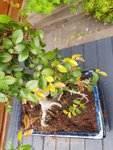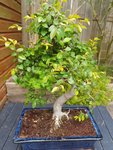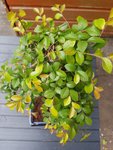Hi
Please lend me some wisdom– I’m a newbie to bonsai care!!
I was given a Chinese Elm as a gift at the end of March.
I initially kept it in indoors, and within a few weeks, the leaves were yellowing very slightly, and I noticed some flies appearing around the base of the tree(which I think may have been fungus gnats?). I think I may have been overwatering it.
I have since moved it outside, to a relatively sunny spot, and only water once top soil appears dry, its been pretty warm though at the moment (I'm in the Netherlands), so has been daily.
However the leaves are still looking slightly yellow/red, especially the newer ones coming through.
Thanks



Please lend me some wisdom– I’m a newbie to bonsai care!!
I was given a Chinese Elm as a gift at the end of March.
I initially kept it in indoors, and within a few weeks, the leaves were yellowing very slightly, and I noticed some flies appearing around the base of the tree(which I think may have been fungus gnats?). I think I may have been overwatering it.
I have since moved it outside, to a relatively sunny spot, and only water once top soil appears dry, its been pretty warm though at the moment (I'm in the Netherlands), so has been daily.
However the leaves are still looking slightly yellow/red, especially the newer ones coming through.
- Any advice on what may be the cause of the yellowing leaves
- Do you think its worth re potting? Is the root system is a bit too exposed?
Thanks



